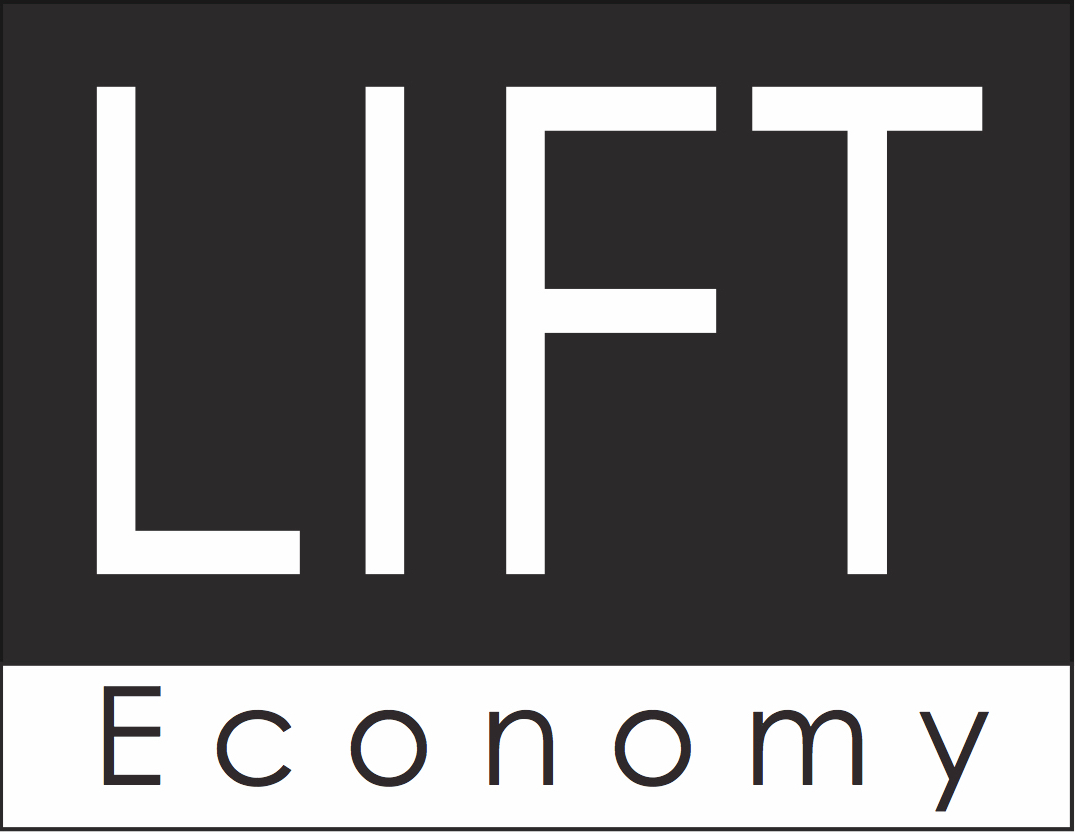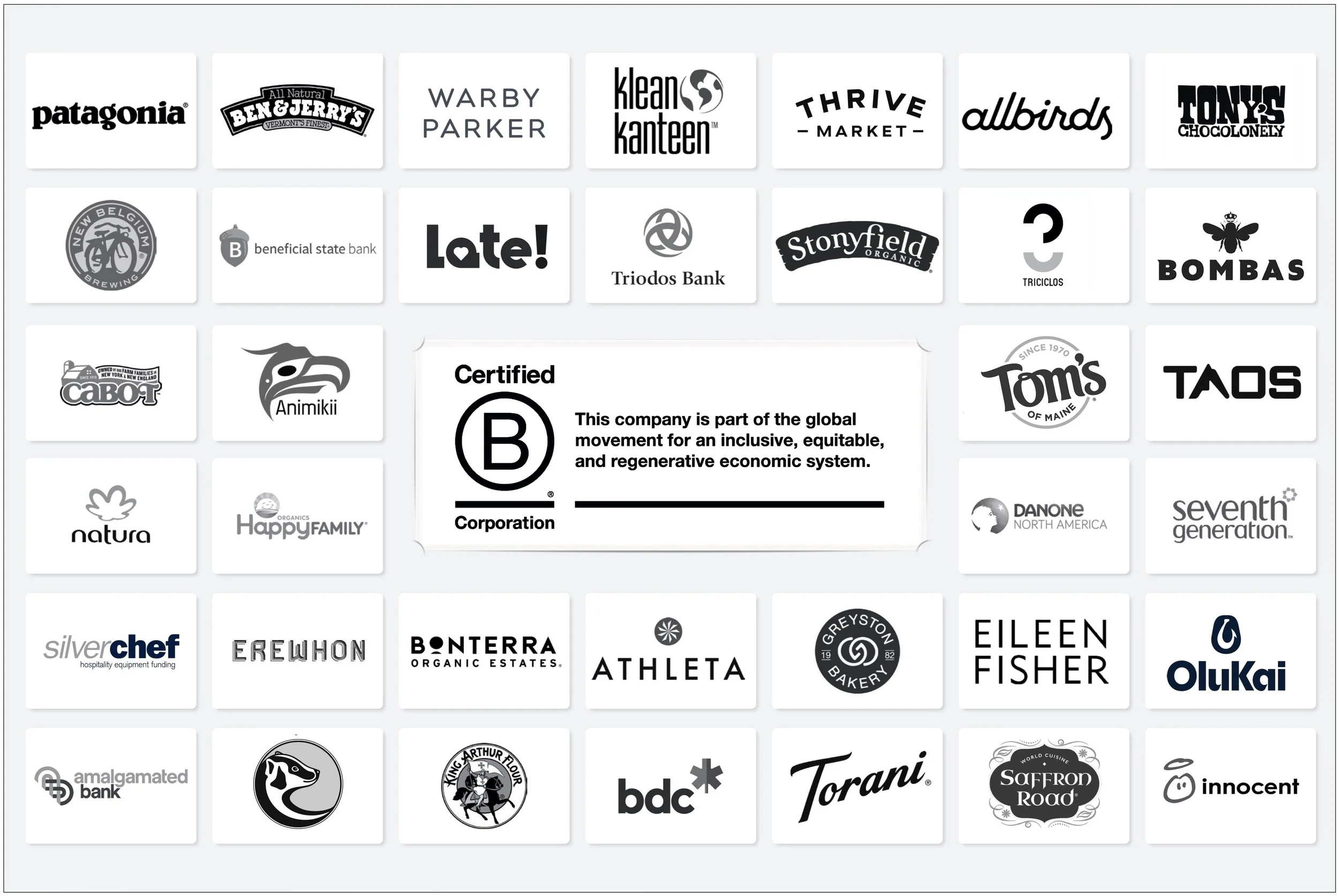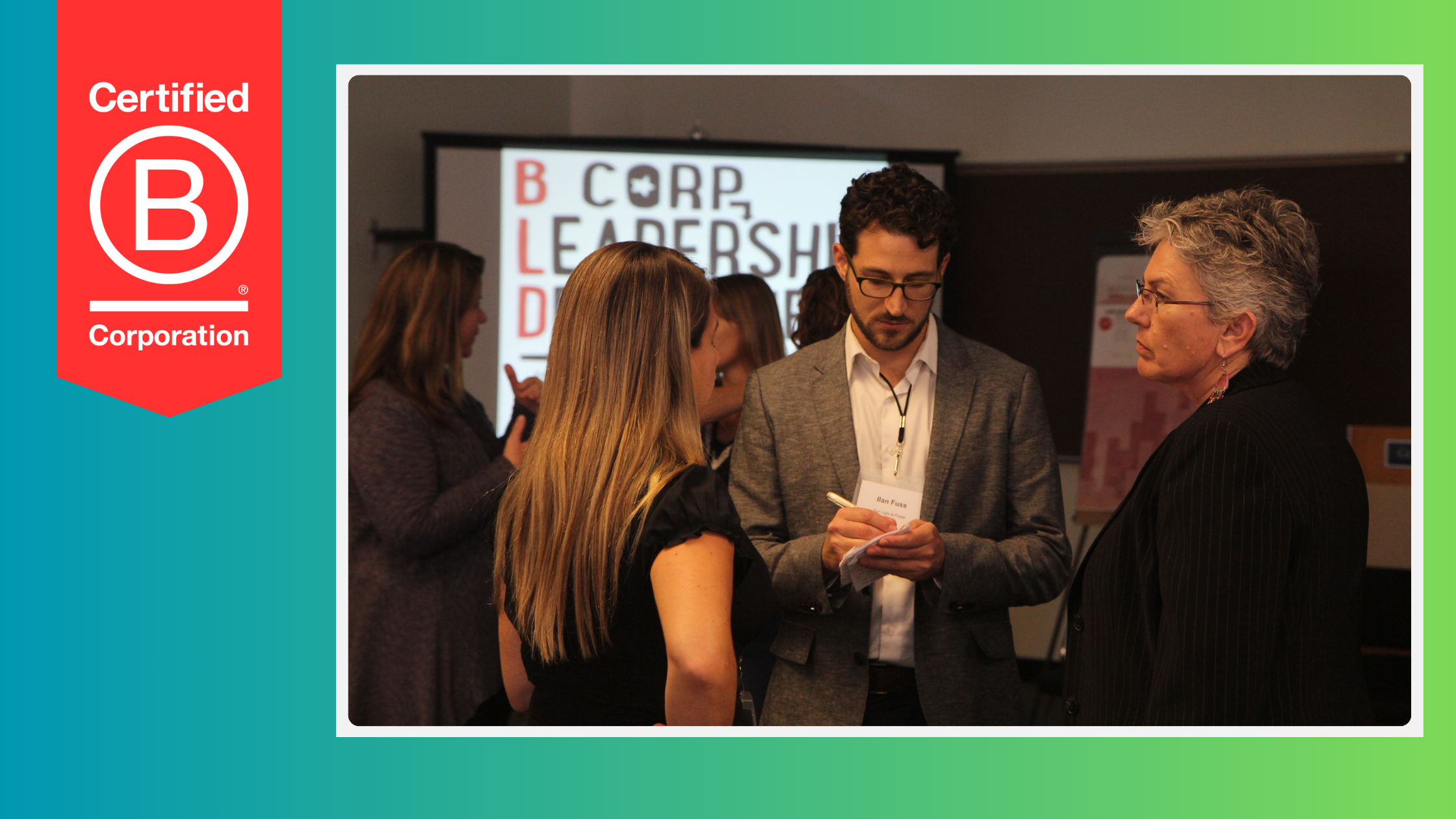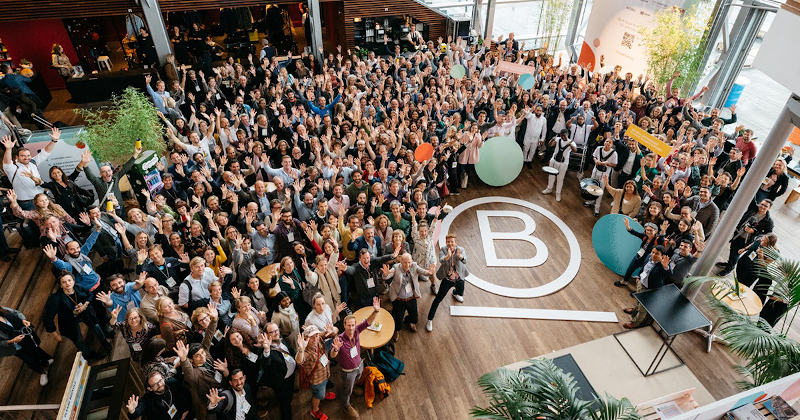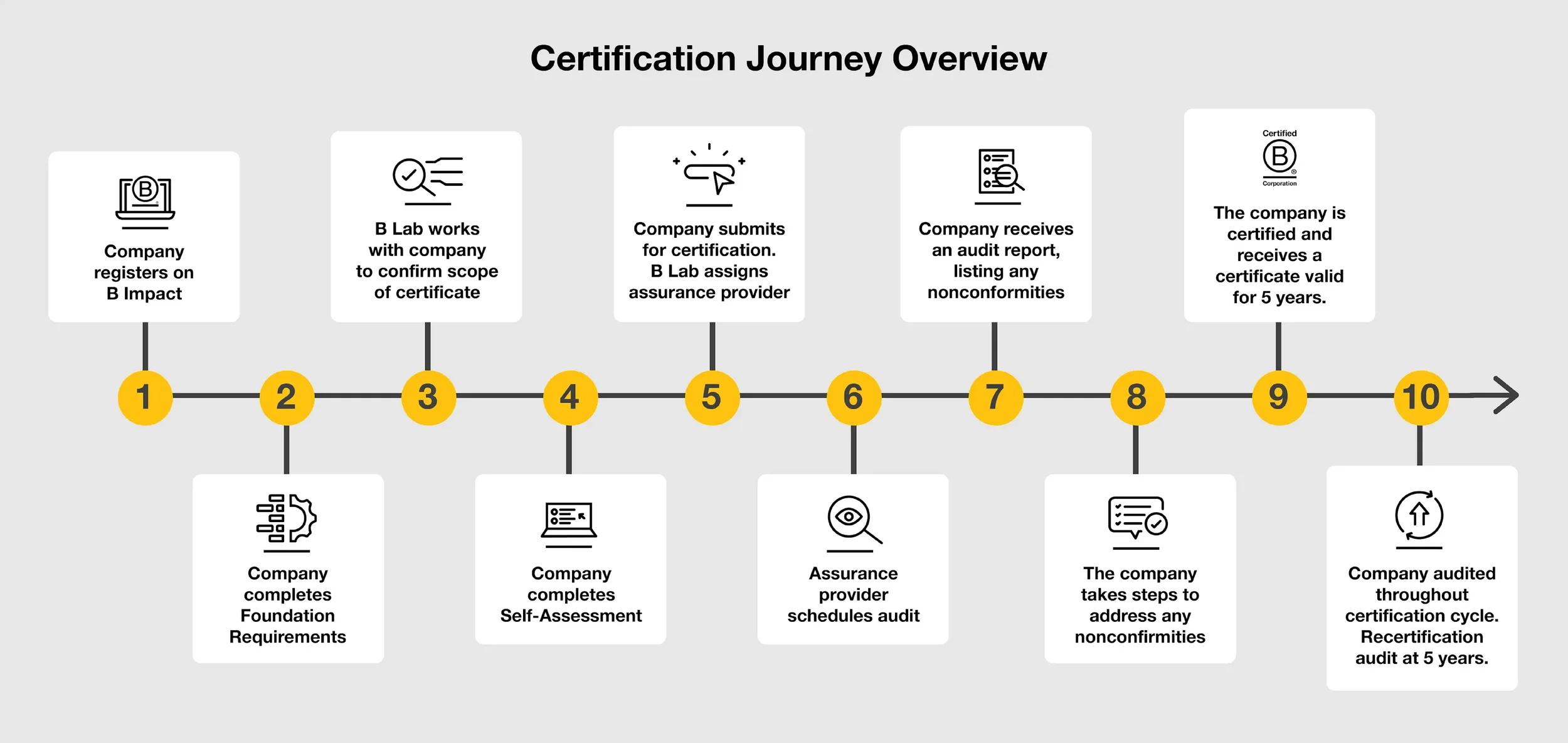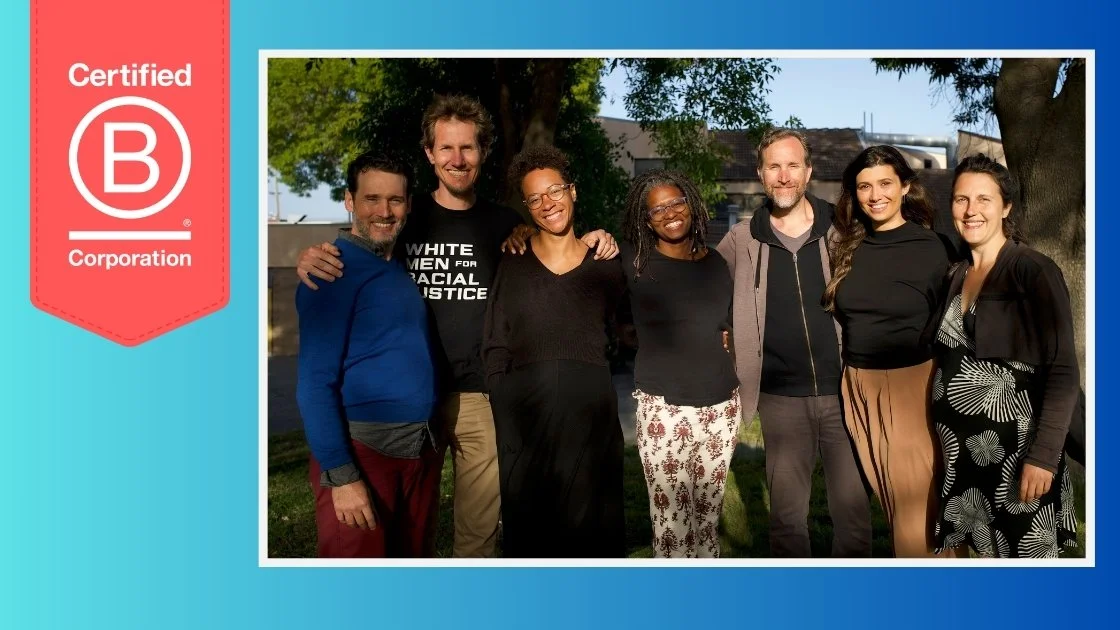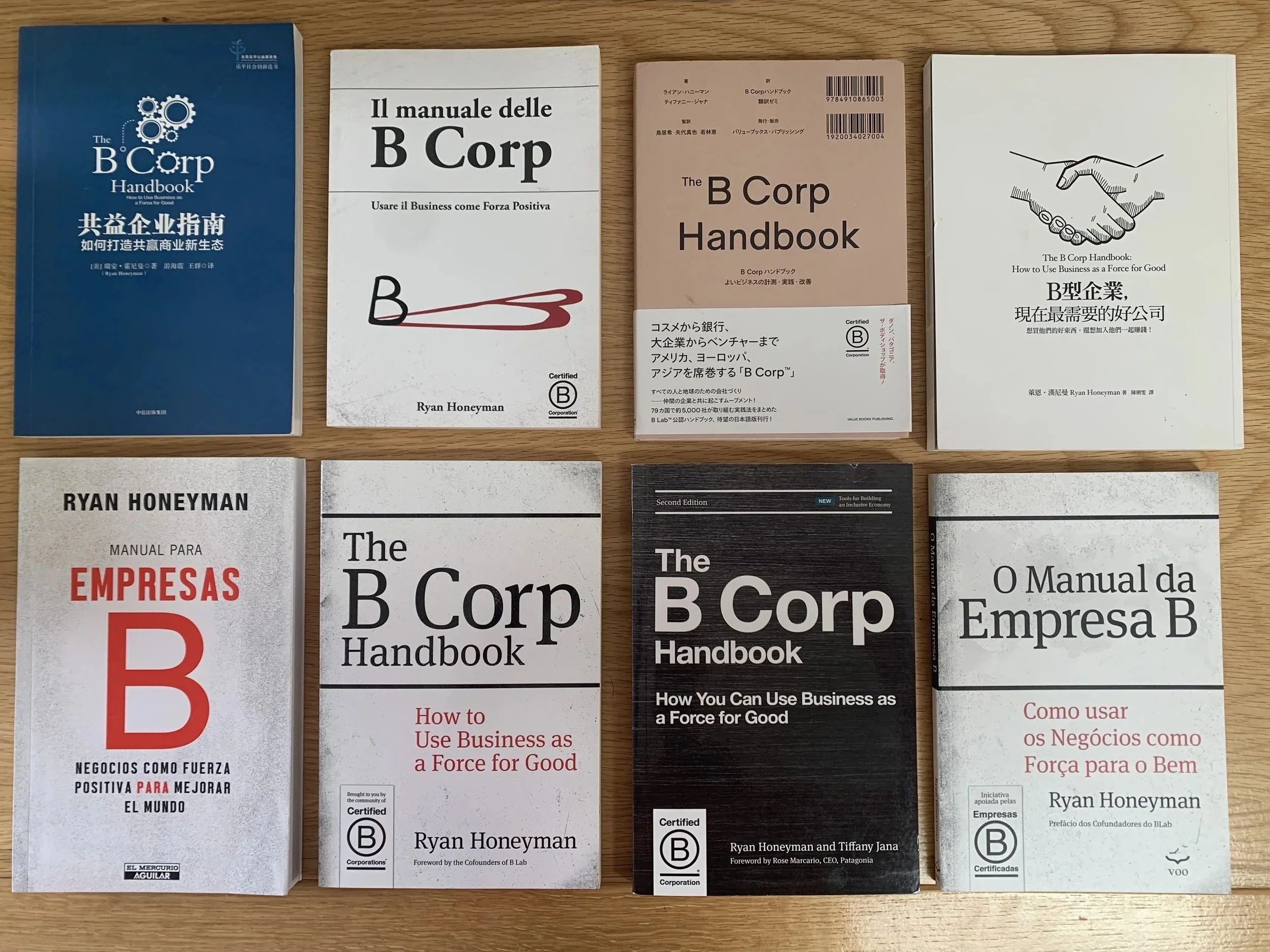This is the third article in our ten-part “Walking the Talk” series, exploring how companies can move beyond certification and truly embody B Corp values in daily practice. After covering Leadership Commitment and Strategic Integration, we now turn to a dimension that often goes overlooked but has outsized influence on whether values show up in real, everyday work.
Values-aligned roles are about clarity, accountability, and coherence. They ensure that every employee, regardless of title or department, understands how their work connects to the mission. When organizations get this right, values stop being abstract aspirations and become part of how people define success in their roles.
What We Mean by Values-Aligned Roles
In the LIFT B Corp Values Assessment, this dimension focuses on three central practices:
Every role has a clear connection to the mission, with responsibilities and expectations that reflect the company’s values.
Hiring, promotion, and role design prioritize lived alignment with those values.
Performance reviews measure how well employees act in accordance with the mission, not just what they produce.
The core idea is simple. People need to know not only what they do, but why it matters in relation to the company’s broader commitments. When responsibilities, incentives, and accountability systems reflect the organization’s intentions, culture becomes easier to maintain and reinforce.
This connection mirrors what we teach in the Next Economy MBA. Roles are one of the most practical leverage points for shifting power, enabling stewardship, and embedding long-term thinking into daily work.
Why Values-Aligned Roles Matter
Most companies articulate their values at the organizational level. Fewer translate those values into expectations for individual roles. Yet this translation is where culture actually lives.
When roles are aligned with values, people are more empowered to make decisions with a clearer sense of purpose. Teams avoid siloed behavior that contradicts the mission, hiring brings in people who will reinforce the culture, promotions reward not just output but how that output is achieved, and employees understand that values are not optional but part of their core responsibilities.
It also creates a pathway for employees—at any level—to practice leadership rooted in care, equity, and stewardship, which is a central throughline in values-aligned organizational design.
This alignment also helps reduce cynicism. Employees can sense when values are only acknowledged at the leadership level and not integrated into their own day-to-day expectations. Clear, values-aligned roles show that the organization is serious about walking the talk.
What Values-Aligned Roles Look Like in Practice
Several patterns show up consistently in organizations that score well in this dimension:
Job descriptions explicitly reference the mission, specific values, or stakeholder responsibilities relevant to the role.
Teams use routines that reinforce alignment, such as reviewing values-aligned decisions in staff meetings or using decision-making frameworks tied to the B Corp commitments.
Performance reviews include clear questions about values, collaboration, equity, stewardship, or community commitments.
Hiring practices include behavioral questions, reference checks, and scenarios that test alignment with values.
Promotions consider how individuals advance the mission and support a healthy culture, not only whether they hit numerical targets.
When companies do this well, employees often report feeling greater ownership and clarity about how their work contributes to something meaningful. They also see fewer “shadow expectations,” because expectations are explicit rather than implied—a shift that often improves psychological safety and reduces inequity.
Common Challenges and Pitfalls
Many companies intend to align roles with values but struggle to operationalize it. Job descriptions that mention values only in an introductory paragraph but do not embed them into responsibilities. Hiring practices might rely heavily on technical skills and overlook behavioral indicators of alignment. Performance reviews might focus on quantitative outcomes without assessing how those outcomes were achieved. Promotion criteria could reward individual output more than collaboration or cultural leadership. Ultimately, there is often a lack of shared language around what values look like in real behavior.
These challenges often reflect a deeper reality. Translating values into role expectations requires clarity, definition, and ongoing reinforcement. It is work that cannot be rushed or delegated.
In our coaching and consulting work, we regularly see that companies avoid this step because it forces difficult conversations about power, accountability, and whose definition of “good performance” gets centered.
How to Strengthen Values-Aligned Roles
The following steps help organizations move from intention to practice:
Review all job descriptions and identify where the mission and values can be made explicit and practical.
Develop behavior-based indicators for what values look like in action and incorporate them into hiring and promotion processes.
Integrate values into performance reviews with concrete criteria or questions.
Train managers on how to evaluate values-aligned behavior in a consistent, fair way.
Include values-aligned responsibilities directly within goals, OKRs, or work plans.
Build rituals that reinforce alignment, such as reflection prompts in team meetings or debriefs after difficult decisions.
Small adjustments in these areas often create major shifts in how employees perceive and internalize the mission. Even linking quarterly goals to a specific stakeholder or value helps make alignment feel practical rather than inspirational.
Examples from Real Companies
RSF Social Finance offers a clear illustration of what values-aligned roles can look like in practice. RSF convenes investors, borrowers, and staff in quarterly pricing meetings to help determine RSF Prime, a customized interest rate for their social enterprise loan program. These meetings create direct connection and transparency among stakeholders and give employees a real role in weighing the needs of all parties when making decisions.
This stands in sharp contrast to conventional finance, where investors or lenders typically hold the decision-making power and set interest rates unilaterally. In most traditional lending models, borrowers have little visibility into how rates are determined, and staff are tasked primarily with implementing decisions made elsewhere. RSF’s approach distributes influence, invites dialogue, and makes relationship-centered decision-making part of the day-to-day responsibilities of staff. Instead of values living in a mission statement, they show up in the structure of how financial decisions are made and who gets to shape them.
Free Resources from LIFT
Many teams struggle with how to translate these ideas into their own structures and expectations. Here are two free tools we designed that you can use to support your work.
Example Role Descriptions: First, here is a sample set of social and environmental responsibilities for manager roles across departments. It provides concrete language companies can adapt when refreshing job descriptions so expectations about impact and stewardship are built in from the start.
Example Performance Review: Second, here is the performance review template we use internally at LIFT that shows how cultural habits, values, and functional responsibilities can be reflected in annual evaluations. Teams often tell us it helps turn abstract values into clear expectations.
Together, these tools offer a simple way to move from intention to practice by making values visible in both role design and ongoing accountability.
Reflection Questions for Your Team
Do employees understand how their roles connect to the mission and stakeholders?
Are values embedded in hiring, not just described?
How consistently are values assessed in performance reviews?
What behaviors are rewarded in promotions?
Where do responsibilities or incentives unintentionally conflict with the company’s commitments?
These questions can spark important conversations about where alignment already exists and where deeper work is needed.
Where This Fits in the Embodiment Journey
Values-aligned roles build directly on the first two dimensions. Leadership sets the tone, strategic integration embeds values into plans and budgets, and this third dimension translates those commitments into expectations for every person in the organization. Without this step, values remain broad statements. With it, values become part of how people define success.
This translation step also enables the next dimensions, such as employee education and operations, to take root because people understand the why behind the changes being introduced.
In the next article, we’ll explore Part 4: Employee Education, which focuses on how onboarding, training, and ongoing development equip employees to act in alignment with your company’s mission.
If you’d like support refining job descriptions, performance reviews, or hiring practices to reflect B Corp values, our team is always happy to help.
Questions? Curious to learn more?
You can also contact us directly by filling out the form below:
